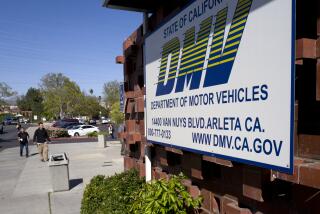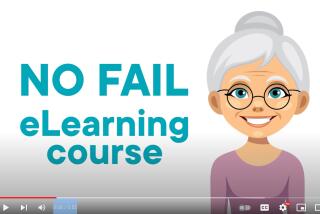Training for teen drivers
Mike Males suggest that California’s graduated driver’s license law may be at fault for increases in teens death and injury for those 18 to 20 years of age, even though fewer 16-year-olds have been dying since the 1998 law took effect.
The writer has missed some very critical historical information in making his suggestion. Classroom driver education and behind-the-wheel driver training requirements have drastically been compromised by some key events.
Beginning in 1990, the state stopped reimbursing school districts that offered behind-the-wheel driver training. The $40 million annually collected from the Driver Training Penalty Assessment Fund has been diverted to other uses. Schools immediately dropped their driver training programs. Very few classes are available in public schools today. Only those teens who can afford it can meet the behind-the-wheel driver training requirement (usually six hours of on-street training with a Department of Motor Vehicles licensed instructor).
In the ensuing years, some other key changes have taken place. Online driver education courses grew with no real regulation. They have become “diploma mills” for teens looking for the cheap and quick way to meet the driver education requirement. These schools use the private secondary school channel to avoid any real regulation from the DMV or the California Department of Education. The Sacramento Bee found a few years ago that some such schools don’t even make a pretense of instruction, charging as little as $5 for the “pink slip” completion certificate. Efforts by the DMV to regulate such schools have been unsuccessful.
Other technology changes, such as cellphones and iPods, have had significant influence on teen drivers, not to say on the driving public in general. New state regulations go into effect in July curbing the use of these devices while driving they may have some influence on lowering death and injury rates for older teen drivers.
Growing pressure on schools to stress basic academic courses over elective courses in the last decade have resulted in budget and scheduling difficulties and teacher shortages for driver education. According to the state Department of Education, only 19,226 students were able to complete a public school driver education course in the 2006-2007 year, down from about 48,000 students completing this course in 1997.
So for Males to say the new GDL law may be the cause for a spike in older teens’ crashes does not recognize the changes in the teens’ opportunities to receive quality driver training. Many do wait until they are 18, so they in effect have no formal instruction. Many also drive illegally before they reach 18, again with no formal instruction. And certainly some teens who were licensed under the GDL law took the cheap online diploma-mill option, because there was little opportunity to take a driving class in their public high schools. A worthy new bill sponsored by state Sen. Tom Torlakson (D-Antioch) would use funds from provisional license application fees to support public school driver education.
We need to keep in mind that the GDL law has been in effect for nearly 10 years. It has been revised recently to extend passenger restrictions. Teens will soon no longer be allowed to use any electronic device while driving. The requirement that parents provide 50 hours of behind-the-wheel experience needs further attention, as noted in the state’s recent Strategic Highway Safety Plan. The reduced death and injury results for novice drivers at age 16 are positive. To discontinue the requirements of gradually having new teen drivers enter the transportation system makes no sense.
Jerry Gaines is a former president of the California Assn. for Safety Education.
More to Read
A cure for the common opinion
Get thought-provoking perspectives with our weekly newsletter.
You may occasionally receive promotional content from the Los Angeles Times.









